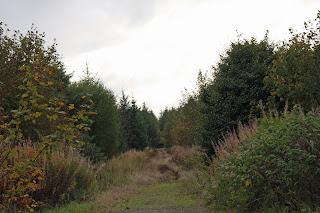Huge concrete mooring blocks were used to anchor the airships. The airships were called 'Lenabo soos' by the local farmers. Landing the airships involved everyone on the base, including the station dog who was trained to assist by grabbing the end of the landing cable which, when thrown from the airship, inevitably landed in a tangled heap. The cable was then passed through an iron ring on a vast concrete block to prevent the airship from rising again.
Normally 100 naval ratings were needed then to manoeuvre the airships in to the sheds by hauling on the landing cable. It was almost impossible to handle the ships in bad weather. Each ship had an emergency panel which could be activated to deliberately rip the casing causing the gas to escape and the ship to collapse. On 21st September 1918 two coastal airships landed in a gale, even with 400 men on the ropes it was impossible to get the airships into the sheds in such a strong wind and they had to be deliberately ripped. |












My father, Jimmy Penny, was born in 1909 so would have been between 7 and 11 years old - at Kittybrewster, Aberdeen school and spending some holidays at Nether Kinmundy farm. He had clear recollections of the "soos" (Doric for pigs) and could readily have seen them taking off and landing. He mentioned to me a girl who seemingly was an airship captain's daughter who, I think, he went to see at the base. A difficult avenue to explore except that the names of the captains are recorded in various places at http://www.ns11.org/1131-2/ which also gives an account of North Sea airships NS3, NS9 and NS 12.
ReplyDelete